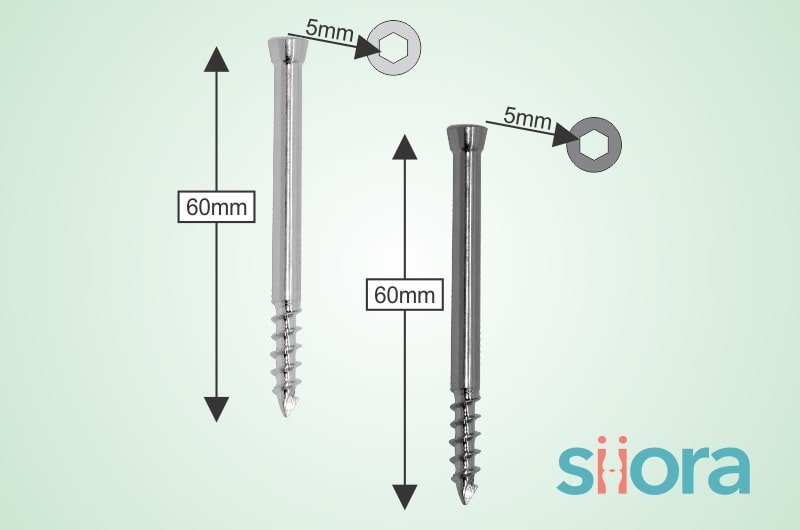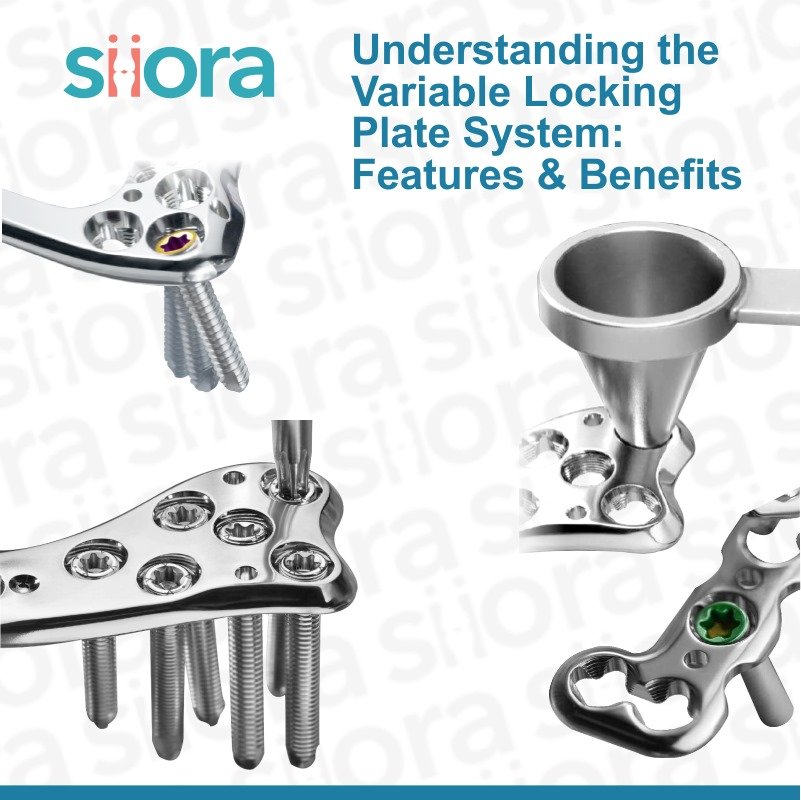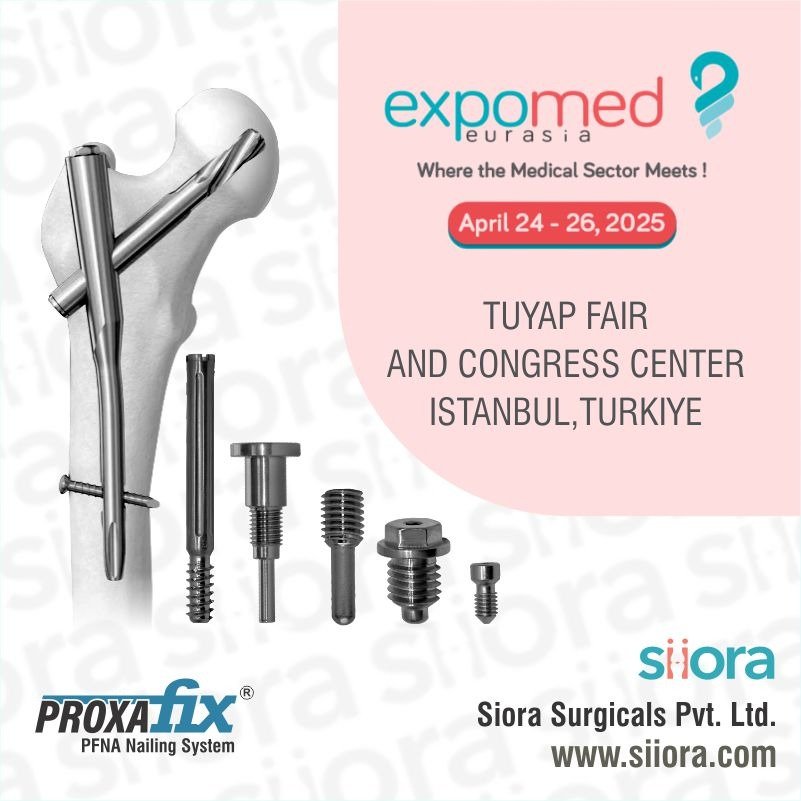Orthopedic Bone Screws are among the oldest used orthopedic implants for the treatment of fractures and other orthopedic conditions. Surgeons can use them alone or along with other trauma implants depending on the severity and the location. In this blog, we will discuss the types and uses of orthopedic bone screws in detail.
Fractures are among the commonest orthopedic injuries that we experience in our lives. In the last few decades, the field of orthopedics has seen a lot of advancements. Orthopedic implants have improved a lot in the last 20-30 years and this has increased the success rate of orthopedic surgeries.
If we talk about bone screws, orthopedic surgeons are using them for a long and with time, they have become better. Let us dive deep into the topic.
What Are Orthopedic Bone Screws?
Orthopedic bone screws are medical devices that orthopedic surgeons use to fix a fracture. They are either used alone for bone-to-bone/bone-to-tissue fixation or with other trauma implants like orthopedic plates. Bone screws are cylindrical devices with threads throughout their shaft. These threads convert torsional force into compression.
If we compare them with conventional screws, then they follow the same mechanical principle. Besides this, orthopedic screws play an important role in keeping fractured bone fragments in their correct anatomy. Hence, this helps with the proper healing of the fracture.
How Orthopedic Bone Screws Work?
Orthopedic screws produce linear motion during rotational movement, and this results in compression. Hence, this helps fix broken bone fragments into their correct anatomy.
Screws have helix-shaped threads on their shaft, and when they are turned from their head, they move into a stationary object i.e., bone. This creates a firm grip between the bone and the orthopedic screw. Hence, the fractured bone fragments stay at their true anatomy and heal with time. Thus, we can say that orthopedic bone screws work by producing compression in bones using torsional forces.
Orthopedic screws also evenly distribute the compression across the surface of the fractured bone. Hence, this ensures the correct placement of the broken bone fragment and faster healing.
What Are the Components of Orthopedic Bone Screws?
Orthopedic screws have three key components namely:
- Head
- Shaft
- Tip
Let us have a look at them one by one.
Head
The topmost component of an orthopedic screw is its head. It prevents the whole screw from sinking inside the bone when applied by serving as a buttress. If required, the orthopedic surgeon can place a washer in between to make this buttress bigger. A washer is used when the screw is applied to a soft bone to evenly distribute the load across the bone and ensure a snug fitting.
Besides this, the head also has a slot for the screwdriver to fit in and produce torsional forces. The screwdriver turns the screw to produce torque and advances it into the fractured bone.
Two of the common head types of screws for orthopedic surgeries include Hexagonal and star-shaped. Hexagonal screws assist in effective coupling while minimizing the risk of damage during application. There is no need for axial force to hold the screwdriver in the head.
Shaft
The shaft is the longest part of the screw which lies between the head and the tip. Besides this, the shaft contains the core and the thread. Let us have a detailed look at both:
Core
The core is the bottommost part of the shaft along its length. The diameter of the core is the smallest. The core is the solid section of the shaft that contains threads.
Thread
Threads are spiral projections on the core of the shaft that fixes the screw firmly with the bone. Depending on the type of bone or fracture, different types of screws are there and they have different types of threads. The threads can be categorized based on the:
Thread Depth – It is the distance of the thread edge from its core. If we talk about cancellous bone, screws with deeper threads are preferred because the bone is softer, and more thread depth is required for better fixation.
Thread Pitch – It is the distance that screw travels to complete one turn i.e., 360°.
Tip
The bottom-most part of the screw is its tip. It helps cut the threads into the bone when applied using the appropriate screwdriver. Tips of some screws can tap their hole during application. Those screws are self-tapping screws. These screws have flutes on their tips which help them easily tap their hole without requiring much force.

How Orthopedic Bone Screws Are Classified?
We can classify bone screws depending on their shape, design, construction material, and application region. Let us see them one by one:
Design
Based on the design, screws can be of different types namely:
Conventional Screws – These are the basic screws that we all know. They have a head, threaded shaft, and a pointed tip.
Locking Screws – These screws are different from conventional screws as they have threaded heads along with the shaft. Thus, this helps the screw lock into the bone. These screws often accompany corresponding locking plates.
Headless Screws – Also known as Herbert Screws, headless screws completely embed into the bone when applied. They are suitable for fractures where minimal tissue coverage is there.
Cannulated Screws – These screws have a hole drilled along their core to allow the placement of the guide wire.
Material of Construction of Orthopedic Bone Screws
- Titanium
- Stainless Steel
- Bioabsorbable Screws
Shape
Non-Self Tapping
These screws require a pilot hole for the insertion.
Self-Tapping
As the name suggests, there is no need for pilot hole for these screws to apply as they can self-tap their hole during application.
Self-Drilling
Self-drilling screws have tips with a shape similar to the drill bit and hence, they can cut their threads when applied.
Self-Tapping and Self-Drilling
These screws not only tap their hole but also cut threads during application.
Areas of Application of Orthopedic Bone Screws
Screws are of different types depending on the region of application:
Cortical
Cortical screws have a larger number of threads and a smaller pitch. They have a fully threaded shaft.
Cancellous
Cancellous screws have a larger pitch and a smaller number of threads. Besides this, they are available with fully or partially threaded shafts.
Malleolar
They have a trocar tip that allows insertion without tapping and/or drilling. The orthopedic specialists can apply these screws in the metaphyseal area, trochanteric area, distal humerus, and sometimes the ankle.
What Are the Uses of Orthopedic Bone Screws?
In general, orthopedic specialists use bone screws during orthopedic surgeries. They hold bone fragments together in their correct alignment either alone or with other orthopedic implants like trauma plates. Based on their function, they can be classified as:
Lag Screws
Lag screws compress the fracture fragments to hold them in place.
Reduction Screws
Reduction screws are to reduce displaced fractures i.e., realign the broken bone fragments.
Locking Screws
They are used with locking plates and are made having a threaded head that locks itself at a fixed angle.
Position Screws
These screws work by holding two bone fragments in a place without any compression.
Anchor Screws
Also known as suture anchor screws, they are commonly used to attach soft tissues to the bone. They are most commonly used in arthroscopic surgeries and ligament reconstruction.
What Are the Instruments for Applying Orthopedic Bone Screws?
Although an appropriate screwdriver is required to insert the screw into the bone, the assistance of some other instruments is also necessary for hassle-free and correct placement. So, let us have a look at the common instruments that orthopedic surgeons use:
Drill Bits
A drill bit is a cutting tool that cuts holes into the bone for inserting the screw. They are available in different sizes depending on the type & size of screw.
Drill Guide
A Drill guide is to protect surrounding tissues and guide the drill bit accurately.
Taps
Taps are used for cutting threads into the bone. They have a flute and a cutting end. Different types of taps are there depending on the screws.
Depth Gauges
Depth gauges are for the accurate assessment of the screw length.
Screwdrivers
Screwdrivers are fixed into the head of the screw to apply torque and generate torsional forces.
To get a CE-certified range of orthopedic implants and instruments including orthopedic screws, contact Siora Surgicals Pvt. Ltd. The company has experience of over 30 years and it manages a huge product inventory. Siora owns an advanced production facility in the RAI District, Sonepat, Haryana, and all orthopedic devices are manufactured here. The company is also an experienced OEM/contract manufacturing service provider across the globe.







